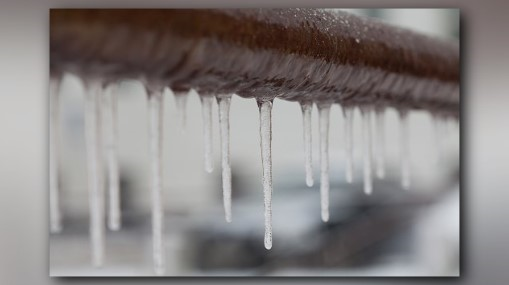Ways to Prevent Frozen Pipes in Winter: Pro Advice
Ways to Prevent Frozen Pipes in Winter: Pro Advice
Blog Article
Just about every person seems to have their unique perception in relation to How to Prevent Your Pipes From Freezing.

Cold weather can damage your plumbing, particularly by freezing pipes. Below's exactly how to prevent it from taking place and what to do if it does.
Introduction
As temperatures decrease, the threat of icy pipes rises, potentially bring about expensive repairs and water damages. Understanding exactly how to prevent frozen pipelines is vital for house owners in chilly climates.
Avoidance Tips
Insulating susceptible pipes
Wrap pipes in insulation sleeves or make use of warmth tape to secure them from freezing temperature levels. Focus on pipelines in unheated or exterior areas of the home.
Heating methods
Maintain indoor spaces adequately heated, especially areas with plumbing. Open up cabinet doors to allow warm air to circulate around pipelines under sinks.
Just how to identify frozen pipelines
Search for decreased water circulation from faucets, unusual odors or noises from pipelines, and visible frost on exposed pipes.
Long-Term Solutions
Architectural changes
Think about rerouting pipes far from exterior wall surfaces or unheated locations. Include extra insulation to attics, basements, and crawl spaces.
Upgrading insulation
Purchase top quality insulation for pipes, attic rooms, and wall surfaces. Correct insulation aids keep regular temperature levels and lowers the danger of frozen pipes.
Shielding Exterior Pipes
Garden hoses and outdoor taps
Detach and drain yard pipes before winter. Mount frost-proof faucets or cover exterior faucets with insulated caps.
Understanding Frozen Pipelines
What causes pipelines to ice up?
Pipelines freeze when exposed to temperatures listed below 32 ° F (0 ° C) for prolonged durations. As water inside the pipes ices up, it broadens, taxing the pipe wall surfaces and potentially creating them to burst.
Risks and problems
Icy pipelines can lead to supply of water disturbances, building damages, and pricey fixings. Ruptured pipes can flood homes and cause substantial architectural damages.
Signs of Frozen Water Lines
Recognizing icy pipelines early can avoid them from rupturing.
What to Do If Your Pipelines Freeze
Immediate actions to take
If you presume frozen pipes, maintain faucets available to soothe pressure as the ice thaws. Use a hairdryer or towels taken in hot water to thaw pipelines slowly.
Conclusion
Preventing frozen pipelines requires aggressive steps and fast actions. By understanding the reasons, indicators, and preventive measures, house owners can protect their pipes throughout cold weather.
5 Ways to Prevent Frozen Pipes
Drain Outdoor Faucets and Disconnect Hoses
First, close the shut-off valve that controls the flow of water in the pipe to your outdoor faucet. Then, head outside to disconnect and drain your hose and open the outdoor faucet to allow the water to completely drain out of the line. Turn off the faucet when done. Finally, head back to the shut-off valve and drain the remaining water inside the pipe into a bucket or container. Additionally, if you have a home irrigation system, you should consider hiring an expert to clear the system of water each year.
Insulate Pipes
One of the best and most cost-effective methods for preventing frozen water pipes is to wrap your pipes with insulation. This is especially important for areas in your home that aren’t exposed to heat, such as an attic. We suggest using foam sleeves, which can typically be found at your local hardware store.
Keep Heat Running at 65
Your pipes are located inside your walls, and the temperature there is much colder than the rest of the house. To prevent your pipes from freezing, The Insurance Information Institute suggests that you keep your home heated to at least 65 degrees, even when traveling. You may want to invest in smart devices that can keep an eye on the temperature in your home while you’re away.
Leave Water Dripping
Moving water — even a small trickle — can prevent ice from forming inside your pipes. When freezing temps are imminent, start a drip of water from all faucets that serve exposed pipes. Leaving a few faucets running will also help relieve pressure inside the pipes and help prevent a rupture if the water inside freezes.
Open Cupboard Doors
Warm your kitchen and bathroom pipes by opening cupboards and vanities. You should also leave your interior doors ajar to help warm air circulate evenly throughout your home.

I hope you enjoyed reading our topic on How To Avoid Freezing Pipes. Thanks a lot for taking a few minutes to read through our post. Enjoyed our piece of writing? Please quickly share it. Let someone else find it. Thanks so much for going through it.
Request Estimate Report this page